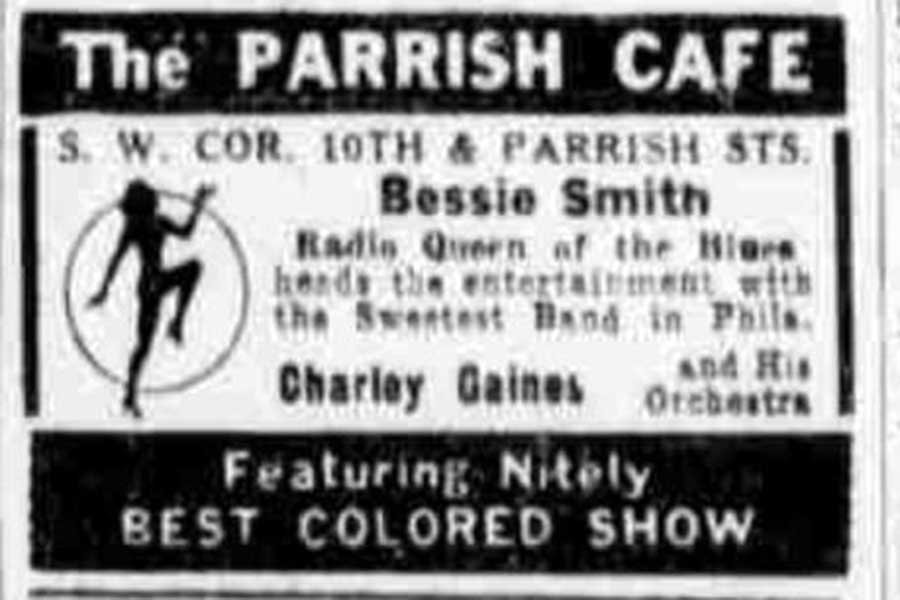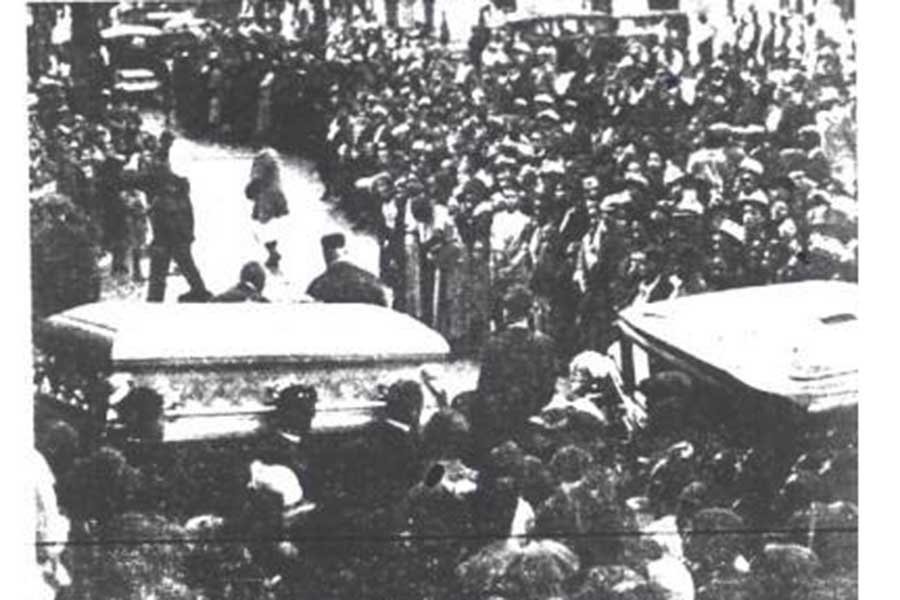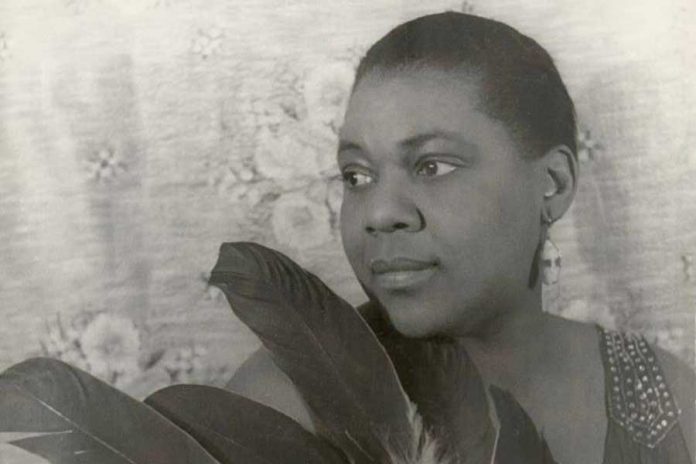When the Royal Theater opened its doors in 1920 on South Street in Philadelphia, it soon became a center for African American arts and culture in the city. Among the acts that performed there during its heyday was blues sensation, Bessie Smith. Smith, born in Chattanooga, Tennessee on April 15, 1894, began singing at a very early age. Unfortunately, she lost her father, a Baptist minister, her mother and two of her brothers to death by the time she was 12. Faced with poverty and the lack of a formal education, she was orphaned (later adopted by an aunt) and became a street singer accompanied by her younger brother on guitar.
In 1912, Smith joined a minstrel show as a dancer and performed on the vaudeville circuit in theaters around the country in an attempt to get away from her aunt and to reunite with her big brother on the road. There she met Ma Rainey, the “Mother of the Blues” who was the singer on tour of the minstrel troupe she danced for. Ma Rainey taught Smith stage presence, how to command an audience and how to navigate show business. Smith soon moved on to performing in various chorus lines and eventually becoming the biggest star on the Black-owned Theater Owners Booking Association (T.O.B.A) circuit.

By the 1920s, Smith had settled down in Philadelphia, at 1319 Christian St., before meeting and marrying Jack Gee in 1923, a security guard. In the same year, she signed a recording contract with Columbia Records. A single titled “Downhearted Blues,” from her debut album sold an estimated 800,000 copies, propelling Smith into the blues spotlight nationally. Her older brother Clarence came on as her business manager and persuaded her to purchase a custom railroad car for her traveling troupe because she toured extensively. By the end of the 1920s, Smith was the highest-paid Black performer in the world at the time, earning herself the title “Empress of the Blues.”
In the meantime, Smith’s marriage suffered due to infidelity by both parties. These infidelities included female lovers for Bessie. Although Gee enjoyed the money, he could not adjust to his wife’s bisexuality or the high demands of show business.
According to Biography.com, Bessie was involved in several love affairs with the dancers of her shows, and it resulted in many violent episodes between her and her jealous husband. But her career continued to flourish. Smith’s music left its mark on the world by empowering women to be fearless, express their sexual freedom and the understanding that working-class women don’t need to alter their behavior to be worthy of respect. Queen Latifah recently portrayed Bessie Smith and displayed her lesbian relationships in HBO’s “Bessie.”
Smith had the respect of her contemporaries which included collaborations with the legendary Louis Amstrong until her untimely death in a car crash at the age of 43. She was dislodged from her car after she was hit by a merging Nabisco truck. She bled to death while waiting for an ambulance to get her to a hospital. Her life ended early while she was transitioning from the “old-fashioned” blues to the more contemporary Swing-style of music.

According to the Philadelphia LGBT Mapping Project, created by Bob Skiba, archivist at the William Way LGBT Community Center, which has tracked 1,110 places in Philadelphia that are significant to LGBT history and culture, Smith’s funeral was “one of the most spectacular in Philadelphia’s history. Smith is buried in Mount Lawn Cemetery in Sharon Hill. Her headstone epitaph reads “The Greatest Blues Singer in the World Will Never Stop Singing. 1895-1937.” Smith’s funeral procession wound through South Street past both the Royal Theater and the Standard Theater where she had performed often.
The Standard Theater showcased the talents of many Black jazz musicians and performers, including Duke Ellington, Louis Armstrong and of course, Bessie Smith.
The Royal Theater in Philadelphia reigned as a beacon of Black culture and excellence for 50 years before shutting its doors in 1970. Like many Black-owned businesses in the 1960s, the Royal Theater began its decline once segregation laws were lifted. Black patrons moved away and spent their money in other parts of the city and surrounding areas. Today, where the Royal Theater once stood is now a mixed-use dwelling of commercial space and 54 apartments, though the facade of the theater has been preserved. Visit Philadelphia, the region’s official tourism marketing agency, mentions the Royal Theatre and Bessie Smith in its “Essential Guide to LGBTQ Philadelphia.”
To explore the Philadelphia LGBT Mapping Project, visit https://www.google.com/maps/d/u/0/viewer?ll=40.36351720000002%2C-74.9513268&z=8&mid=1gyv3dfHs3MS82BHisv8oyZA77Ng

